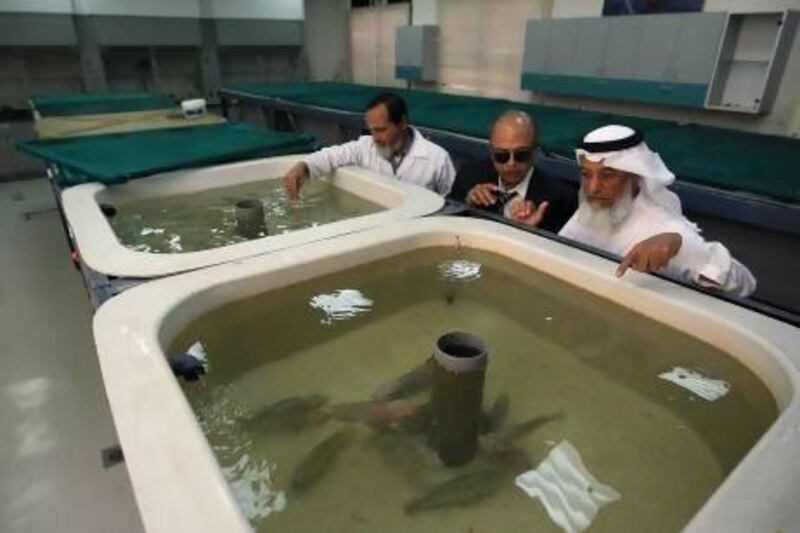ABU DHABI // Aquaponics seems to be the perfect system: fish produce waste (and food), which fertilises plants, which clean the water (and produce food), allowing it to be re-used.
It uses hardly any water, there is very little waste and at each stage it produces food, which for a country as reliant on imports as the UAE is no minor consideration.
But which fish to use, and which plants? A new aquaponics unit in Al Ain is hoping to provide some answers in a Dh1.2 million research project.
The unit, next to UAE University, combines traditional aquaculture - fish reared in tanks - with a system that uses fish waste as fertiliser for its hydroponic vegetable tanks.
"So far, we have 10,000 fingerlings of four species of tilapia and catfish in a research lab," said Mamdouh Kawanna, an aquaculture specialist at the university.
"By March, we hope to be able to move 5,000 tilapia and 3,000 catfish to the new unit."
The 1,600-square-metre unit will include four greenhouses with 16 fibreglass tanks for fish and 16 for plants. Each greenhouse will hold four lines of the 24-metre tanks.
Construction started two weeks ago and the team hopes to have a greenhouse up and running by the end of next month.
"The university's department of arid-land agriculture will work in collaboration [with us] on horticulture," said Dr Jean-Yves Mevel, an aquaculture professor at the university. "We also want to know how many fish are needed for how many plants."
But the unit's main goal is to see how well the system produces various crops including lettuce, tomatoes, cucumber and strawberries with different fish species.
"The main purpose is research," said Dr Mevel. "How to optimise production is one goal."
The species of fish is crucial.
"The best is the tilapia because it has [high productivity]," said Dr Ibrahim Belal, an associate professor in aquaculture at the university.
"The second is the catfish because it can live in that kind of environment, so it's easier to put it in higher density."
Tilapia are prodigious breeders, with a 1-kilogram female producing about 5,000 eggs every four to six weeks. Female catfish produce just 2,000 eggs twice a year.
The system differs from others in the UAE because the fish and hydroponic tanks are in the same greenhouse. "In others, they were separated," said Jabber Al Mazroui, the chief executive of JBA Agritech, which built the facility. "It's better because it's easy to access both at the same time and we're utilising the land in a better way."
Students at the university will also be able work on their own aquaponics projects in a laboratory next door.
"We have classrooms here next to a practical room," said Dr Mevel. "Most countries don't have classes onsite so it will be a prominent place in the [Arabian] Gulf. It's important to get involved in the practical part of it."
And local interest is growing. "We're starting to see more interest in students because it's more applied to the country. It'll take time."
The first results of the project are expected by June, while the students' first research work should be done by September.
Over time, the system will be expanded and upgraded.
"We want to improve the filtration system to provide better performance on the system," said Dr Mevel.






